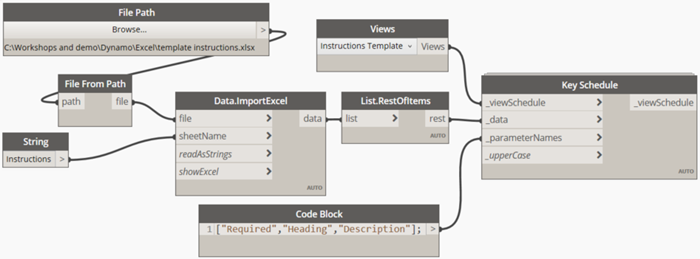Enhance Your Operations with Revit Add Ins and Plugins
Wiki Article
Understanding the Art of Data Combination: Just How to Seamlessly Import Excel Info Into Revit
Are you battling to import Excel files into Revit efficiently? Look no more! In this short article, we will certainly lead you through the process of understanding the art of information integration. Discover the value of smooth assimilation in Revit and explore the Excel data style for Revit assimilation. Prepare to prepare your Excel data easily and follow our detailed overview to import documents into Revit. With our best methods, you'll accomplish information assimilation success in a snap. Let's get started!Understanding the Importance of Data Integration in Revit
Understanding the importance of data integration in Revit is essential for seamless importing of Excel files. When you integrate information from Excel right into Revit, it permits you to successfully upgrade and handle information throughout the whole task. This combination makes sure that your design and construction procedure is updated and precise.By incorporating data, you can easily import and update parameters, routines, and even geometry in Revit. This removes the demand for manual information access, saving you time and lowering the risk of errors. With Revit's information assimilation abilities, you can keep consistency and accuracy in your project, while also enhancing collaboration amongst staff member.

Checking Out the Excel Data Style for Revit Combination

In order to effectively incorporate Excel data into Revit, it is crucial to make certain that the information is formatted properly. This consists of effectively identifying columns and rows, along with structuring the data in a manner that works with Revit's data schema. Revit makes use of certain parameters and groups to organize information, so it is necessary to align the Excel information with these specifications to ensure a smooth integration.
In addition, it is essential to keep in mind that Revit only sustains certain information types when importing from Excel. These consist of text, numbers, and dates. Any kind of other information types, such as solutions or conditional formatting, will not be identified by Revit and may create issues throughout the integration process.
Preparing Your Excel Information for Seamless Import Into Revit
To guarantee a smooth assimilation process, you'll need to effectively style and tag the columns and rows in your Excel data before importing it right into Revit. Due to the fact that it allows Revit to precisely analyze and arrange your data, this step is critical. Start by examining your Excel information and recognizing which columns and rows include pertinent details for your Revit project. Make certain to classify each column with a descriptive and clear header. This will assist you and others quickly recognize the objective of each column and avoid confusion during the import process.Next, guarantee that the data in each column is appropriately formatted. If you have a column for dimensions, make sure that all dimensions are regularly formatted in the same units of measurement. click for source Revit counts on regular format to accurately interpret and import information.
In addition, it is crucial to inspect for any type of empty cells or inconsistencies in your information. Revit might not have the ability to check out or import information from cells that are empty or include mistakes. It is advised to review your Excel data and clean up any type of variances before importing it into Revit.
Step-By-Step Overview to Importing Excel Info Into Revit
Once you have actually effectively formatted and identified your Excel data, you can conveniently import it into Revit by following this step-by-step overview. To begin, open Revit and browse to the "Insert" tab. Click on "Import CAD" and pick "Import Excel" from the dropdown menu. A new home window will show up, asking you to locate the Excel documents you intend to import. Surf your computer system and select the Excel documents, then click "Open."Next, a dialog box will certainly appear, allowing you to personalize the import setups. Right here, you Recommended Site can pick the worksheet you intend to import, define the variety of cells to import, and choose the he said ideal systems for your information. Once you've made your options, click "OK" to continue.
Revit will currently display a preview of your Excel information. Take a moment to make sure and review the preview that every little thing looks correct. If needed, you can make modifications to the import setups by clicking on the "Settings" switch.
Ideal Practices for Data Integration Success in Revit
Make sure you comply with these best practices to guarantee successful integration of data in Revit. It is crucial to organize your information in Excel prior to importing it right into Revit. Be mindful of the units and data kinds when mapping the data, as any type of discrepancies can lead to errors in the assimilation procedure.One more vital method is to routinely validate and upgrade your data. Additionally, make use of data validation devices within Revit to determine any kind of errors or inconsistencies in the incorporated data.
Finally, it is recommended to establish a clear process for information integration. This includes defining functions and obligations, establishing a communication channel in between team participants, and developing a routine tempo for data updates and evaluations. By following these finest techniques, you can guarantee a successful and smooth assimilation of data in Revit, eventually boosting the efficiency and precision of your task.
Conclusion
In verdict, understanding the art of information integration is essential for seamless import of Excel files into Revit. Understanding the importance of information assimilation in Revit is the initial action in the direction of effective combination.When importing data from Excel into Revit, it is essential to understand the file format and just how it can influence the assimilation procedure (import excel into revit). Revit makes use of certain specifications and classifications to organize information, so it is vital to straighten the Excel data with these parameters to ensure a smooth assimilation
Be mindful of the units and information types when mapping the information, as any type of inconsistencies can lead to errors in the assimilation process.
Additionally, make usage of information validation devices within Revit to determine any mistakes or variances in the integrated information.

Report this wiki page